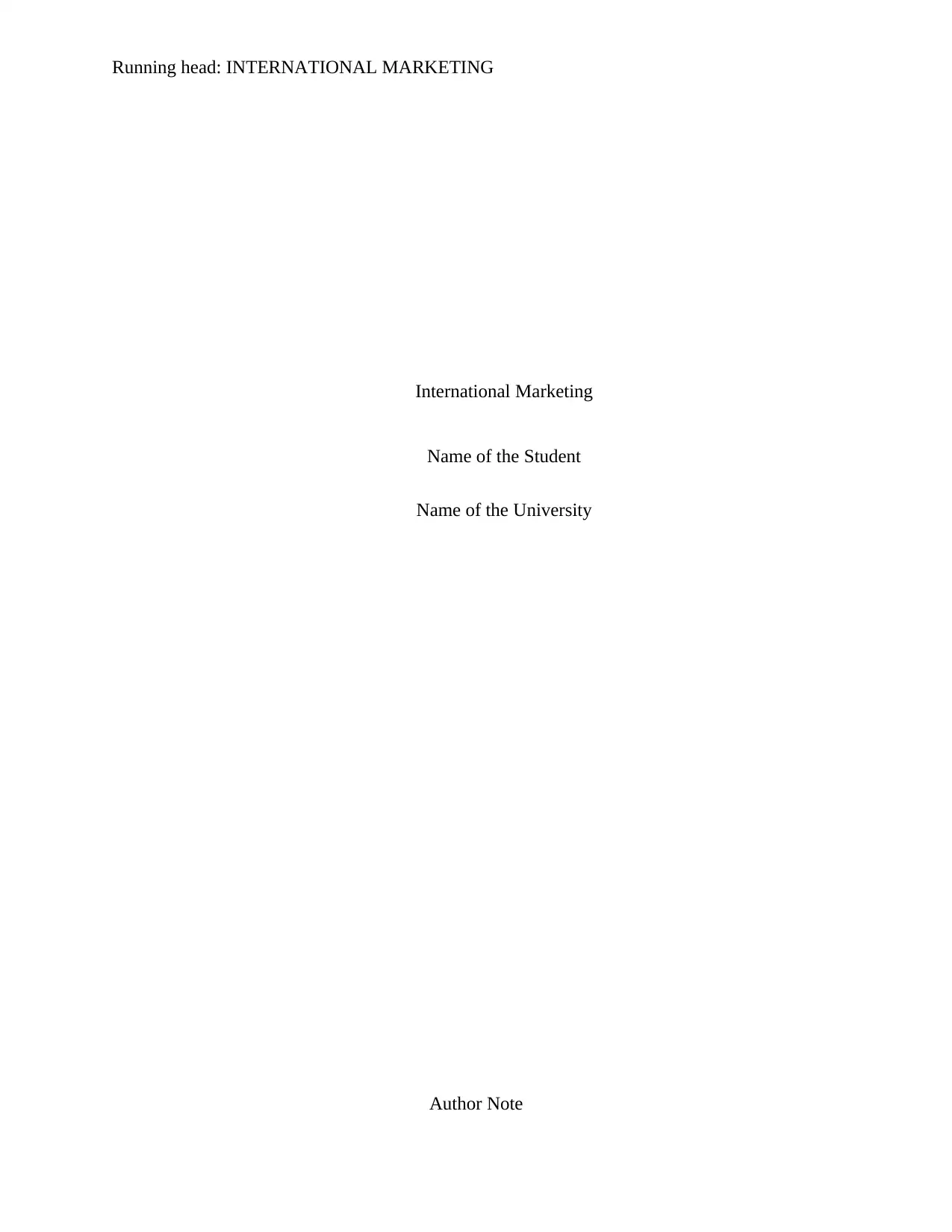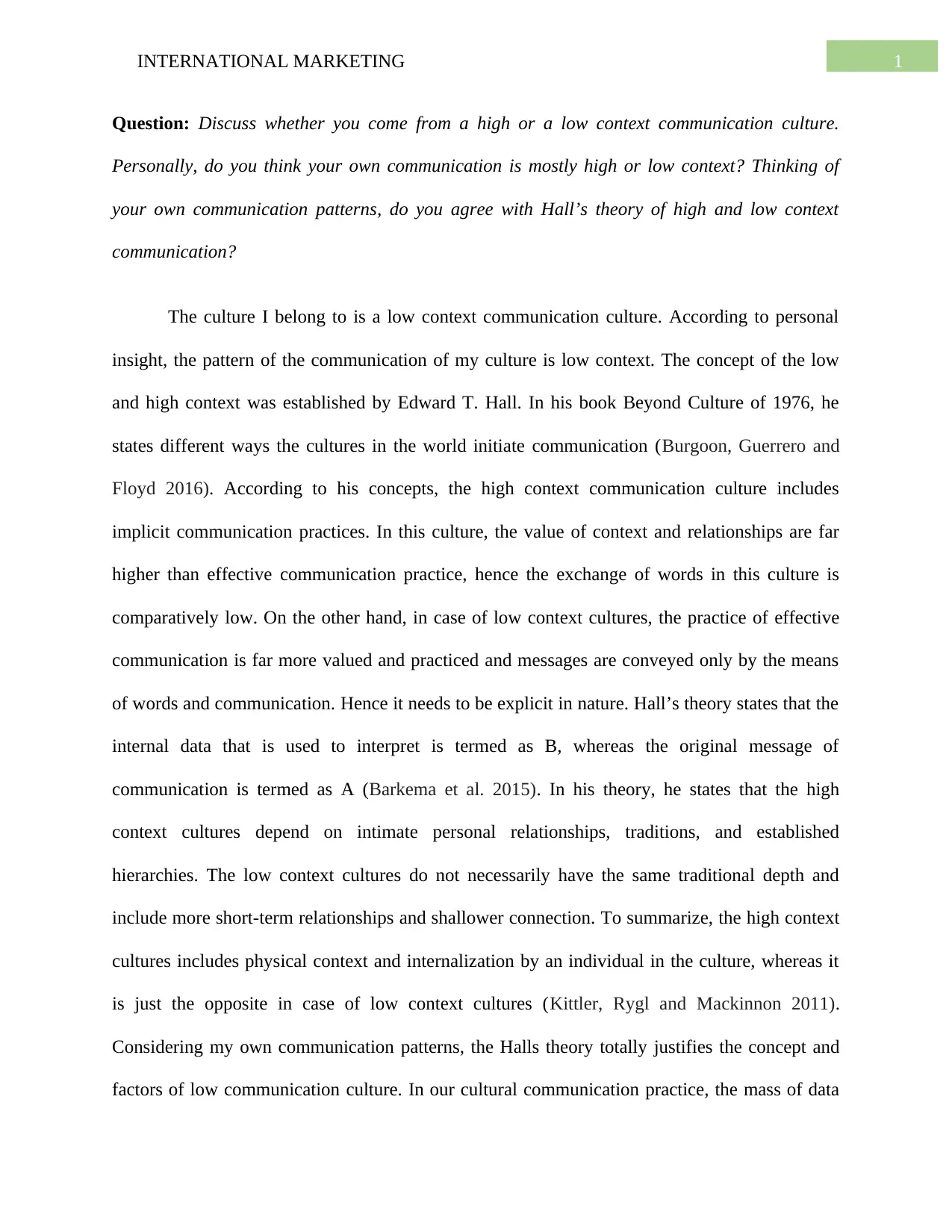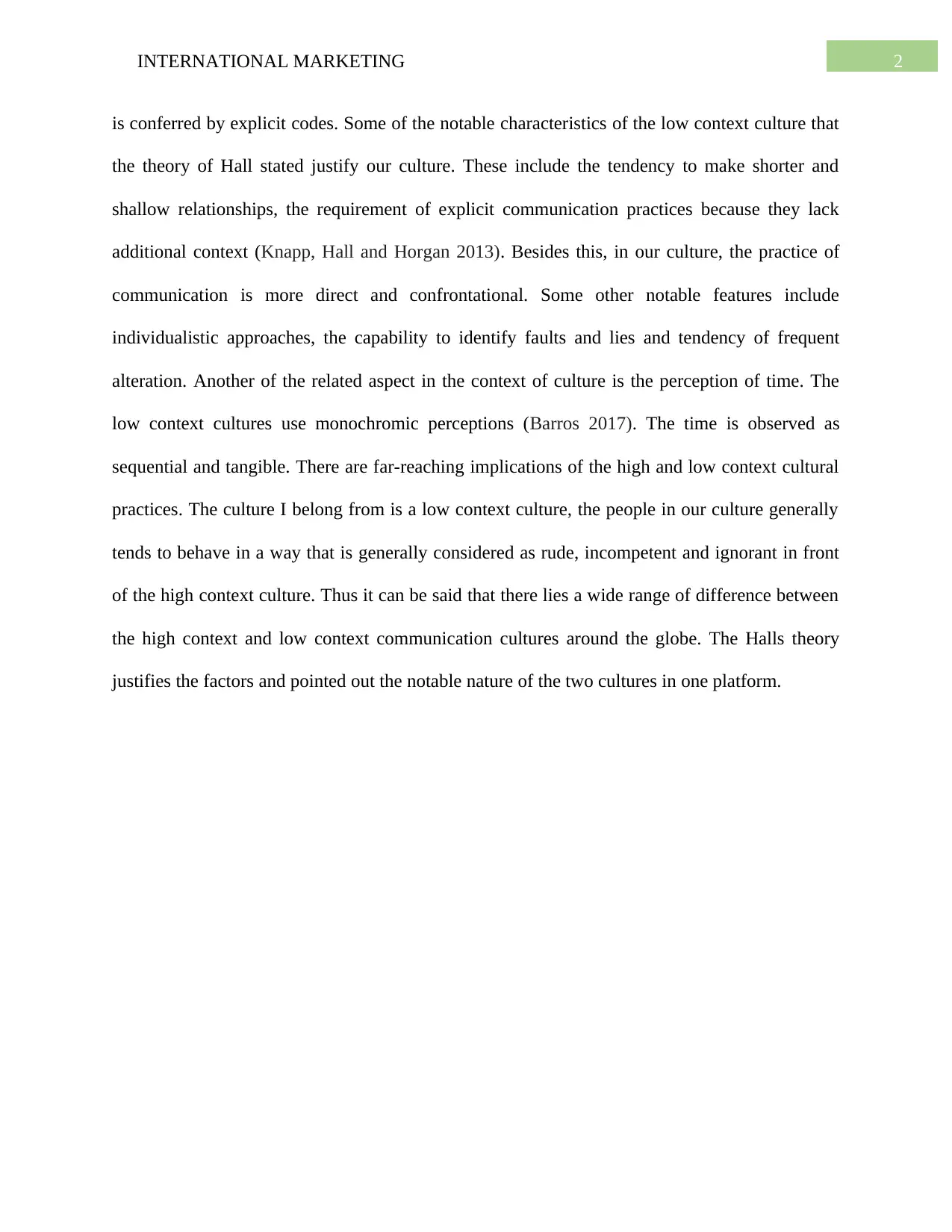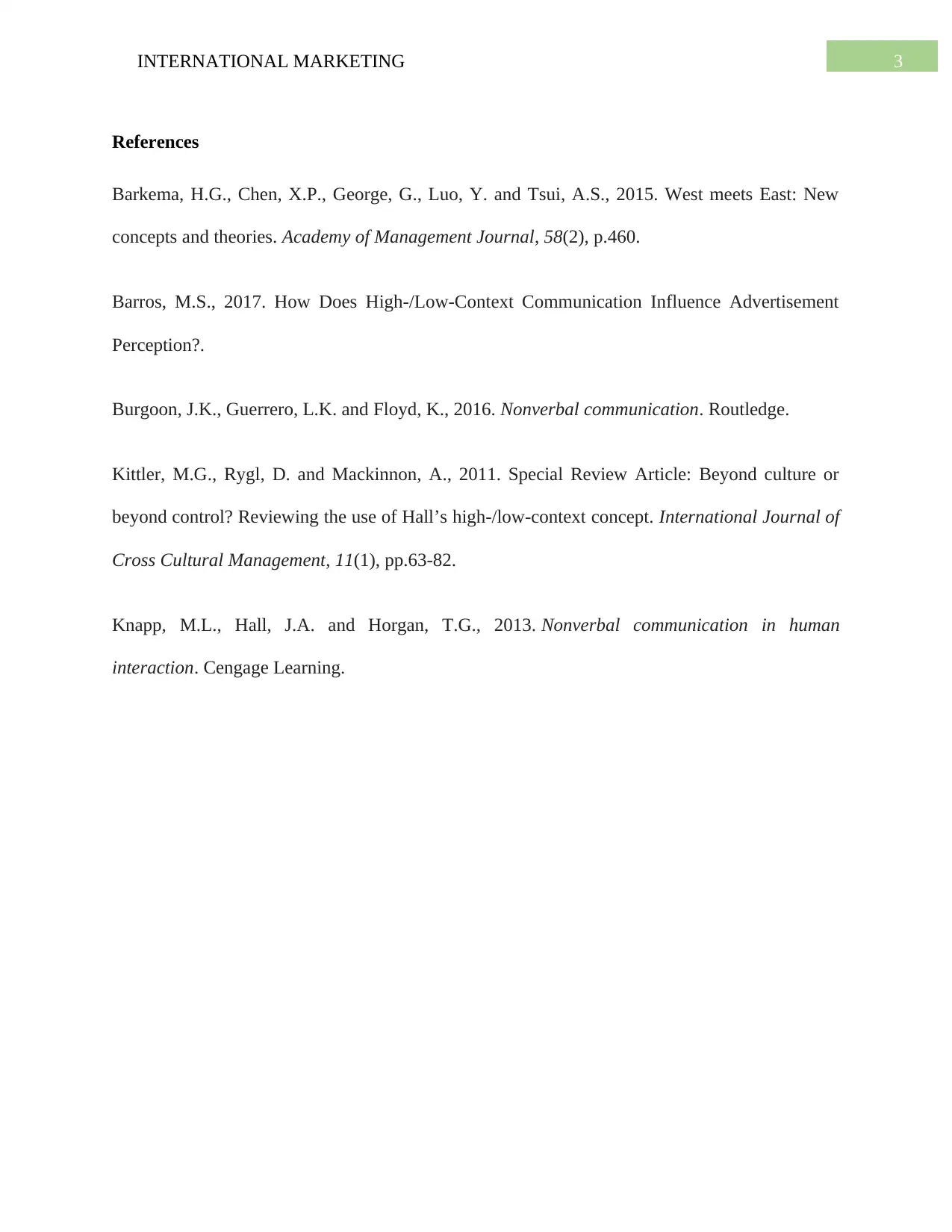International Marketing Assignment: Communication Context Analysis
VerifiedAdded on 2021/06/16
|4
|769
|19
Essay
AI Summary
This essay delves into the realm of international marketing, specifically focusing on the concepts of high and low context communication cultures as defined by Edward T. Hall. The author, identifying with a low-context communication culture, analyzes the characteristics of both cultural approaches, highlighting the emphasis on explicit communication in low-context cultures and implicit communication in high-context cultures. The essay discusses Hall's theory, which emphasizes the role of context, relationships, and implicit understanding in high-context cultures, contrasting it with the direct and explicit communication style of low-context cultures. The author then reflects on their personal communication patterns, aligning with Hall's theory and providing examples to support the characteristics of a low-context culture, such as short-term relationships, directness, and individualistic approaches. The essay concludes by acknowledging the implications of these cultural differences in international business and communication.
1 out of 4











![[object Object]](/_next/static/media/star-bottom.7253800d.svg)